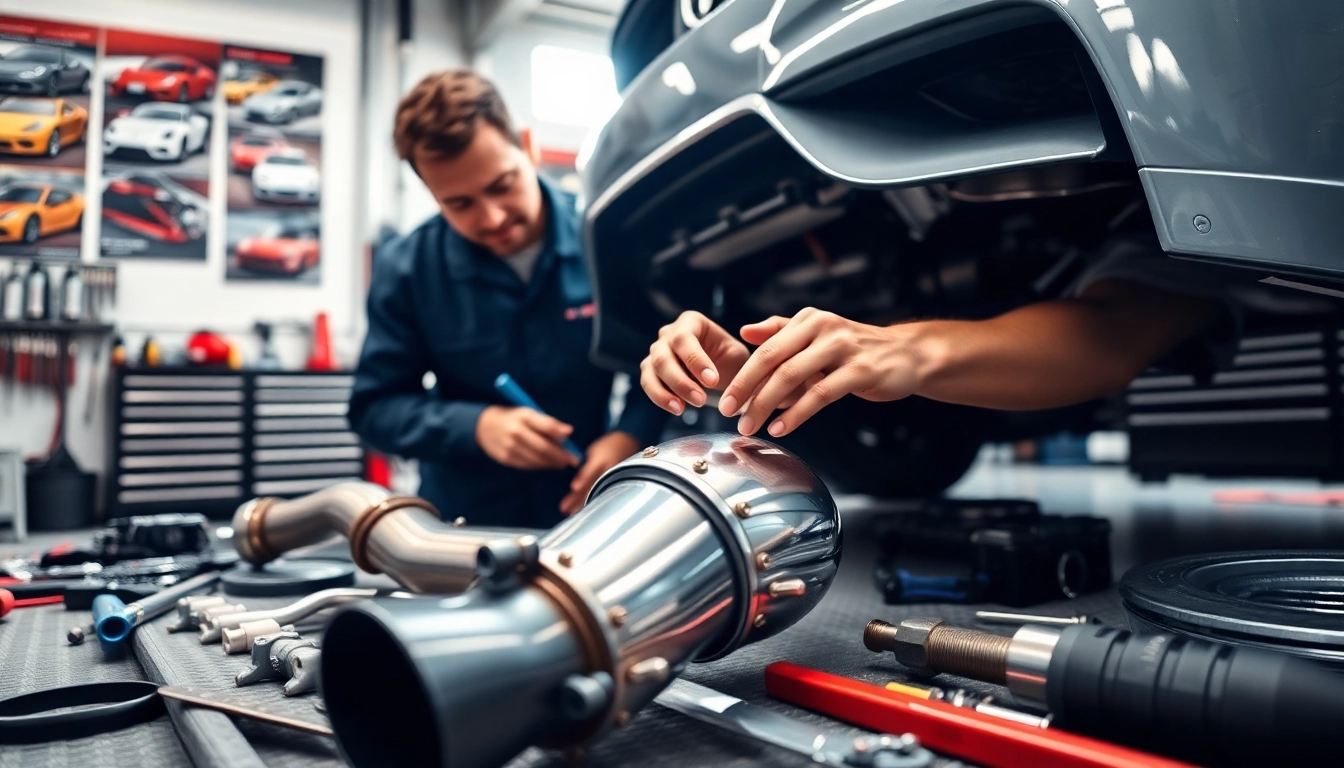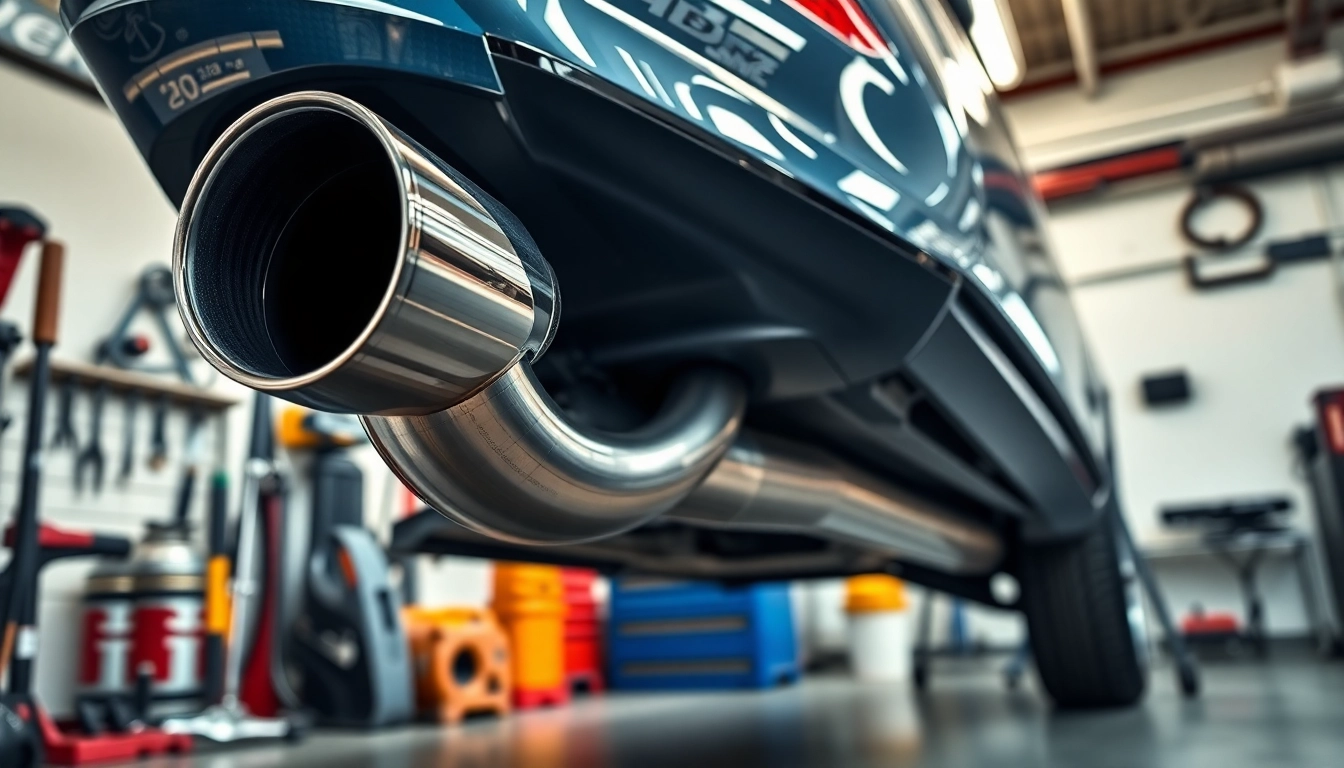Understanding the F80 Midpipe
The quest for enhanced performance in BMW vehicles, particularly the F80 M3 and M4, has led enthusiasts to explore modifications like the f80 midpipe. This crucial component plays a significant role in the overall exhaust system and can dramatically influence not only performance but also sound quality and vehicle weight. By understanding the intricacies of the F80 midpipe, car enthusiasts can make informed decisions about upgrades that cater to their specific driving needs and tuning goals.
What is a Midpipe?
A midpipe is a section of exhaust piping that connects the downpipes (or headers) to the rear section of the exhaust system. For the BMW F80, midpipes are designed to replace or supplement the OEM (Original Equipment Manufacturer) piping. They often have a larger diameter than the stock components and can come in various configurations such as single or equal length designs. The primary function of a midpipe is to facilitate the efficient flow of exhaust gases from the engine, thereby optimizing performance and enhancing the overall driving experience.
The Function of the F80 Midpipe
The F80 midpipe serves several critical functions. Primarily, it reduces back pressure in the exhaust system, allowing for a more efficient expulsion of exhaust gases. This reduction in back pressure can lead to improved horsepower and torque, particularly at high RPMs. Additionally, the F80 midpipe can influence exhaust sound; certain designs amplify aggressive tones while others prioritize a more mellow output. In essence, the midpipe acts as the intermediary that can either stifle or unleash the power of your BMW’s engine.
Importance of Upgrading Your Midpipe
Upgrading the midpipe of an F80 is not merely a cosmetic enhancement; it is a significant upgrade that can lead to improved vehicle performance and driving pleasure. The stock midpipe is engineered to meet various regulatory and efficiency standards, which often results in restrictions that can limit performance. By installing an aftermarket midpipe, enthusiasts often experience increased horsepower, refined throttle response, and a more engaging auditory experience, making it a worthwhile investment for those looking to maximize their BMW’s capabilities.
Benefits of Upgrading to an F80 Midpipe
Improved Exhaust Flow and Performance
One of the primary benefits of upgrading to an F80 midpipe is the improvement in exhaust flow. A well-designed aftermarket midpipe is engineered to reduce restrictions and improve the diameter of the exhaust pathway. This leads to a more efficient engine operation, where gases are expelled quicker, resulting in enhanced power output. Many users report noticeable increases in horsepower especially at higher RPMs, translating to a more powerful and responsive drive.
Sound Quality Enhancements
Driving a BMW is not just about sheer performance; it’s about the experience, which encompasses sound. The F80 midpipe significantly alters the exhaust note, allowing drivers to enjoy a more aggressive, sporty sound without excessive drone at cruising speeds. Depending on whether a resonated or non-resonated midpipe is chosen, drivers can tailor their auditory experience. This distinct sound is often what drivers crave; it enhances the enjoyment of driving while showcasing the car’s power.
Weight Reduction Benefits
Weight is an often overlooked factor in vehicle performance. Aftermarket midpipes, especially those made from lightweight materials such as titanium or high-grade stainless steel, can offer significant weight savings compared to the heavier OEM options. Reducing weight in the exhaust system can lead to a more responsive vehicle, with improved acceleration and handling characteristics. This reduction not only enhances performance but can also contribute to better fuel efficiency, creating a dual benefit for performance-oriented drivers.
Selecting the Right F80 Midpipe for Your BMW
Choosing Between Single and Equal Length Midpipes
The decision between single and equal length midpipes often comes down to personal preference and performance objectives. Single midpipes are typically simpler and lighter, making them a popular choice for those focused on weight savings and a distinct sound. Conversely, equal length midpipes aim to equalize exhaust gas flow from each cylinder bank, which can create a smoother, more balanced exhaust note and enhanced performance, particularly in terms of high RPM power delivery. Evaluating your goals, whether they be sound or performance oriented, will guide your decision in selecting the appropriate type.
Material Quality and Durability Considerations
The quality of materials used in constructing the F80 midpipe significantly impacts its performance and longevity. Stainless steel is a common choice due to its durability and resistance to rust and corrosion. Higher-end options may use titanium, which offers exceptional weight savings along with corrosion resistance and thermal properties. When selecting a midpipe, it’s essential to consider both initial cost and long-term durability, as a high-quality product can provide better value over time.
Compatibility with Other Performance Mods
When upgrading your midpipe, considering its compatibility with existing engine and exhaust modifications is crucial. For example, if you have performance downpipes or a specific exhaust system, you will want to ensure that your new midpipe aligns perfectly with these components. Additionally, certain midpipes may be designed to work best with specific exhaust systems or interface more effectively with aftermarket tuning options, optimizing overall performance output.
Installation Process of the F80 Midpipe
Tools Needed for Midpipe Replacement
Replacing the F80 midpipe requires some basic tools and equipment to ensure a smooth installation process. Key tools may include:
- Socket and wrench set
- Jack and jack stands (or a hydraulic lift)
- Exhaust hanger removal tool
- Torque wrench
- Safety glasses and gloves
Having the right tools on hand not only speeds up the installation but also contributes to a more successful and safer experience.
Step-by-Step Installation Guide
The installation of an F80 midpipe can be accomplished in a few key steps:
- Prepare the Vehicle: Park your BMW on a flat surface, engage the handbrake, and ensure proper safety measures are in place.
- Lift the Vehicle: Use a jack to lift the vehicle and secure it on jack stands.
- Remove the Stock Midpipe: Disconnect the existing midpipe from the downpipes and exhaust system using the socket set. Make sure to remove exhaust hangers carefully to avoid damaging them.
- Install the New Midpipe: Position the new f80 midpipe in place. Securely attach it to the downpipes and exhaust system using the provided clamps or hardware.
- Reattach Hangers: Use the hanger tool to help reattach any exhaust hangers that were removed during the process.
- Final Checks: Double-check all connections and ensure that everything is secure before lowering the vehicle back to the ground.
- Test Drive: Once installed, take your BMW for a test drive to evaluate the sound and performance.
Common Mistakes to Avoid During Installation
While installing an F80 midpipe may seem straightforward, there are common pitfalls that can be avoided. These include:
- Failing to tighten bolts adequately, which can lead to leaks.
- Neglecting to check fitment, potentially causing vibrations or misalignment during driving.
- Forgetting to replace worn out exhaust hangers, which are critical for maintaining proper exhaust positioning.
- Rushing the process, which can result in mistakes; take time to ensure each step is completed thoroughly.
Maintaining Your F80 Midpipe for Longevity
Regular Inspections and Cleaning Tips
To ensure that your F80 midpipe maintains its performance and aesthetics, regular inspections are essential. Look for signs of wear or corrosion, especially at connection points. Additionally, cleaning the midpipe can prevent residue buildup that may impede performance. A simple wash with soapy water followed by a thorough rinse can help maintain its condition. Avoid using harsh chemicals that can damage the finish.
Signs of Wear and When to Replace
There are several signs that may indicate it’s time to replace your F80 midpipe, including:
- Excessive rust or corrosion that compromises structural integrity.
- Increased noise levels that may indicate leaks or damage.
- Visible cracks or holes in the midpipe material.
- A decline in vehicle performance, which could highlight airflow restrictions.
If you encounter any of these issues, consider consulting with a professional or replacing the midpipe to ensure optimal performance.
Maximizing Performance Through Maintenance
To keep your F80 midpipe performing at its best, maintain a regular schedule of inspections and cleaning. In addition to taking care of the midpipe itself, it’s important to ensure that surrounding components, like the exhaust system and engine performance parts, are functioning correctly. A well-maintained exhaust system contributes to the overall health of the vehicle and enhances your driving experience by ensuring maximum performance.



